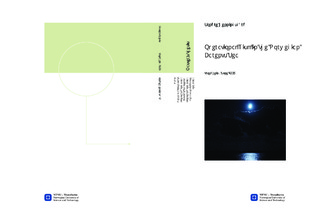| dc.description.abstract | With the estimated increase in demand for energy in the World by one-third within the next 25 years, the findings and estimates in the Arctic are of great importance. Equipment, procedures, training, facilities, logistics, EER and production are only some of the many challenges for the industry moving north. The industry must be prepared for the public eye, as high societal expectations to companies must be anticipated. There are great differences between the areas in the Arctic; therefore this thesis focuses on areas that are currently open for petroleum activities in the Norwegian Barents Sea, considering two operational scenarios and two emergency preparedness scenarios.1. Operation scenarios a. Off-loading by shuttle tanker b. Flotel connected to rig2. Emergency preparedness scenarios a. Emergency landing with helicopter on water (Ditching) b. Man over board (MOB)The overall question to be answered was whether the Norwegian Barents Sea is significantly rougher than the North Sea and thus if it is possible to carry out the selected scenarios? This was split into three parts: What is required and/or needed for these operations to be performed with a satisfactory level of risk? How will this influence the availability? Is it possible to conduct operations in the Norwegian Barents Sea at this point, without unreasonably high cost? By satisfactory it is meant as good as the North Sea.Background material regarding Barents Sea conditions and the operations investigated was thoroughly studied before a qualitative risk analysis was performed. The Bow Tie method was selected for this analysis, based on scenarios created for the particular operation or emergency preparedness cases; focusing on the differences between the Norwegian Barents Sea and the rest of the Norwegian Continental Shelf. The main differences found for the area of interest were; rapid weather changes, icing, polar night, lower temperatures and underdevelopment.The analysis has revealed that the selected operations in the area of interest can be carried out with a satisfactory risk level, with extra attention paid to operational planning and some minor adjustments to requirements. The Norwegian Barents Sea stands out as an Arctic area that will allow for petroleum activity without unreasonable added costs. The analysis and research has found that the conditions in the Norwegian Barents Sea are not significantly different from what the industry faces in other areas of the Norwegian Continental Shelf. The main issue found was the underdevelopment of the area and no area emergency preparedness. Uncertainties with weather forecasts are also an issue; however these are expected to improve as more observations are made. The forecast models for polar lows need to be improved. With gradual development and improved infrastructure, the investigated scenarios will not represent any greater risk in the Norwegian Barents Sea than other areas on the Norwegian Continental Shelf.Communicating the risk level to the public is a challenge for the industry. Industry partners seem to agree on the challenges and risks, and that they are not significantly different or worse than in the North Sea. The analysis? performed in this thesis do not challenge this view. Public opinion seems to be that the Norwegian Barents Sea is something completely new and different from the rest of the Norwegian Continental Shelf. At least for the cases studied in this thesis, this simply is not true. | nb_NO |

